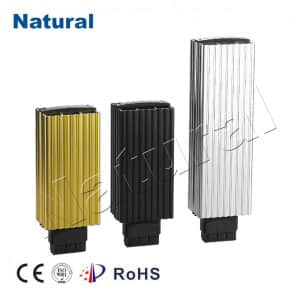With the ever-increasing demand for energy-efficient and versatile heating solutions, the element heater has emerged as a game-changer in the world of heating technology. In this article, we will delve into the world of element heaters, exploring their functionality, applications, benefits, and future prospects.

What is an Element Heater? An element heater, also known as an electric resistance heater, is a device designed to generate heat by passing an electric current through a resistive element. This element, typically made of materials such as nickel-chromium alloy or iron-chromium-aluminum alloy, resists the flow of electricity, leading to the production of heat. Element heaters come in various forms, including tubular heaters, cartridge heaters, strip heaters, and more, each tailored to specific applications.
Applications of Element Heaters
Industrial Heating: Element heaters are extensively used in industries for processes like metal melting, plastic molding, and chemical reactions. Their ability to reach high temperatures quickly makes them indispensable in manufacturing settings.
Commercial Heating: In commercial spaces, element heaters find their place in space heating systems, ovens, and appliances. They provide rapid and precise heating, ensuring comfort and efficiency.
Residential Heating: Element heaters are often used in household appliances like water heaters, electric stoves, and radiant heating systems. They offer responsive heating and are relatively easy to control.
Medical and Laboratory Equipment: Precision heating is crucial in medical and laboratory equipment, and element heaters play a vital role in maintaining specific temperatures for experiments, sterilization, and incubation.
Benefits of Element Heaters
Energy Efficiency: Element heaters are known for their high energy efficiency. They convert nearly all the electricity they consume into heat, minimizing energy wastage.
Fast Heating: Unlike some other heating methods, element heaters heat up quickly, providing immediate warmth or reaching desired temperatures in industrial processes.
Precise Control: Modern element heaters can be equipped with advanced control systems, allowing users to maintain precise temperatures for various applications.
Longevity: Element heaters are durable and have a long service life when properly maintained. This makes them a cost-effective heating solution in the long run.
Clean and Odorless: Electric element heaters produce clean and odorless heat, making them ideal for indoor use without concerns about emissions or ventilation.
Future Trends and Innovations
As technology continues to advance, element heaters are likely to see further improvements and innovations. Some future trends to watch out for include:
Smart Control: Integration with smart home systems and IoT (Internet of Things) technology to enable remote control and automation.
Energy Storage: Developing element heaters that can also function as energy storage devices, making them even more versatile and sustainable.
Materials Innovation: Research into new materials that can improve energy efficiency and durability while reducing environmental impact.
Green Energy Integration: Incorporating element heaters into renewable energy systems like solar and wind power to enhance energy sustainability.
In conclusion, element heaters have revolutionized heating technology with their efficiency, versatility, and precise control. From industrial applications to everyday household use, these heaters continue to play a vital role in keeping us warm and powering various processes. With ongoing research and innovation, element heaters are set to become even more integral to our daily lives while contributing to a greener and more sustainable future.
 28 items Patent
28 items Patent
 28 items Patent
28 items Patent
 28 items Patent
28 items Patent

